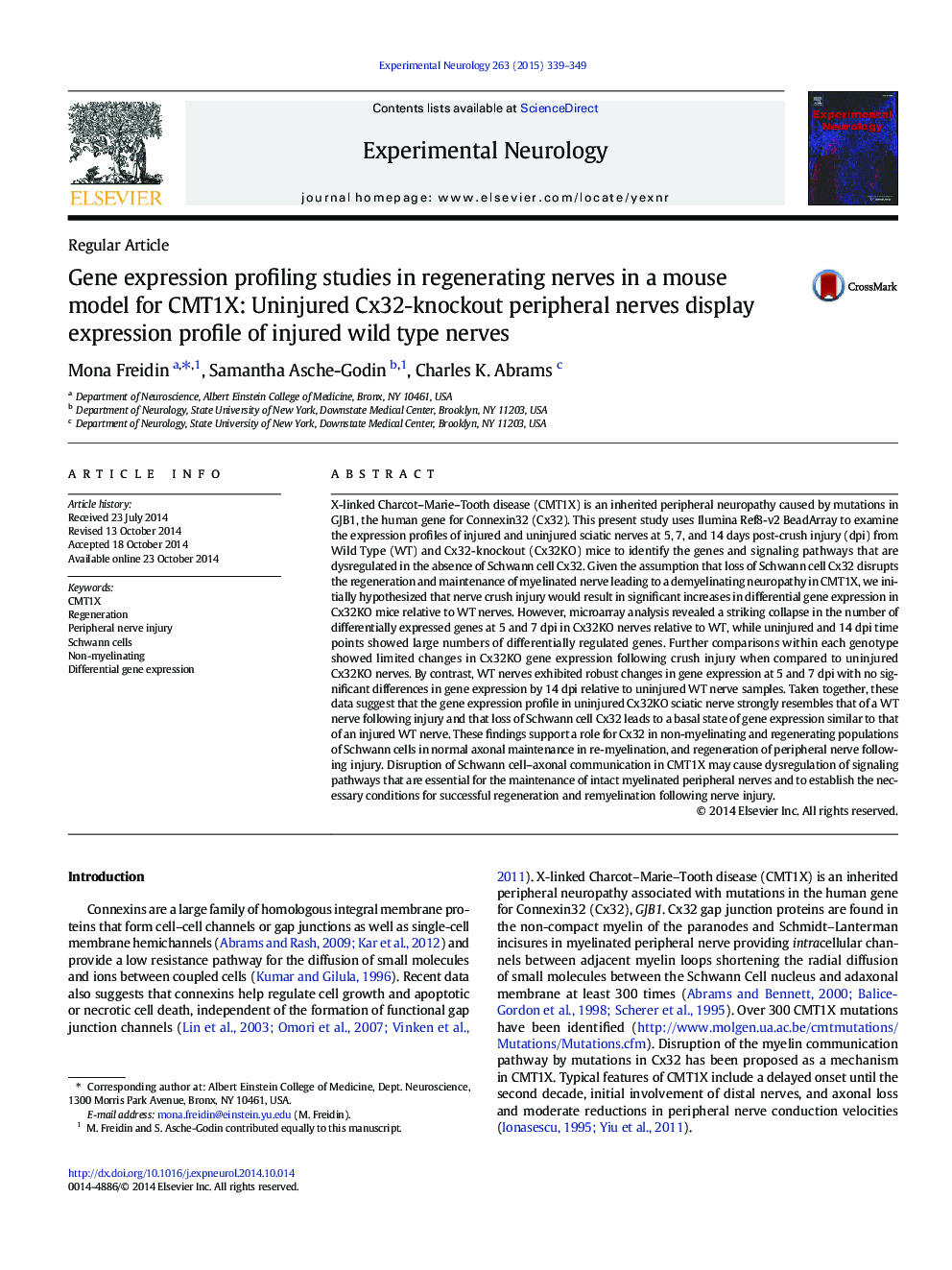| کد مقاله | کد نشریه | سال انتشار | مقاله انگلیسی | نسخه تمام متن |
|---|---|---|---|---|
| 6017557 | 1580170 | 2015 | 11 صفحه PDF | دانلود رایگان |

- Expression profile using Illumina Beadarray in CMT1X mice vs WT after nerve crush
- 640 and 891 DEG in uninjured and 14dpi Cx32KO nerves vs WT, few DEG at 5 and 7Â dpi
- Expression profile of uninjured Cx32KO nerves resemble injured WT nerves.
- Regulation of genes associated with Schwann cell differentiation and immune response
- Myelination-independent Schwann cell mechanisms mediate CMT1X neuropathy.
X-linked Charcot-Marie-Tooth disease (CMT1X) is an inherited peripheral neuropathy caused by mutations in GJB1, the human gene for Connexin32 (Cx32). This present study uses Ilumina Ref8-v2 BeadArray to examine the expression profiles of injured and uninjured sciatic nerves at 5, 7, and 14Â days post-crush injury (dpi) from Wild Type (WT) and Cx32-knockout (Cx32KO) mice to identify the genes and signaling pathways that are dysregulated in the absence of Schwann cell Cx32. Given the assumption that loss of Schwann cell Cx32 disrupts the regeneration and maintenance of myelinated nerve leading to a demyelinating neuropathy in CMT1X, we initially hypothesized that nerve crush injury would result in significant increases in differential gene expression in Cx32KO mice relative to WT nerves. However, microarray analysis revealed a striking collapse in the number of differentially expressed genes at 5 and 7Â dpi in Cx32KO nerves relative to WT, while uninjured and 14Â dpi time points showed large numbers of differentially regulated genes. Further comparisons within each genotype showed limited changes in Cx32KO gene expression following crush injury when compared to uninjured Cx32KO nerves. By contrast, WT nerves exhibited robust changes in gene expression at 5 and 7Â dpi with no significant differences in gene expression by 14Â dpi relative to uninjured WT nerve samples. Taken together, these data suggest that the gene expression profile in uninjured Cx32KO sciatic nerve strongly resembles that of a WT nerve following injury and that loss of Schwann cell Cx32 leads to a basal state of gene expression similar to that of an injured WT nerve. These findings support a role for Cx32 in non-myelinating and regenerating populations of Schwann cells in normal axonal maintenance in re-myelination, and regeneration of peripheral nerve following injury. Disruption of Schwann cell-axonal communication in CMT1X may cause dysregulation of signaling pathways that are essential for the maintenance of intact myelinated peripheral nerves and to establish the necessary conditions for successful regeneration and remyelination following nerve injury.
Journal: Experimental Neurology - Volume 263, January 2015, Pages 339-349